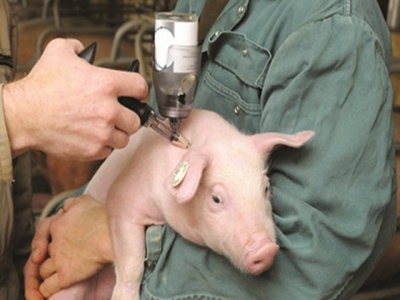Novel swine virus type may shed light on viral evolution

New type of enterovirus may partner up with "helper virus" to gain access to host cell, but mechanism underlying this process is unclear.
Schematic diagram of the genome organization of EV-G, type 1 and type 2 recombinant EVGs.
Viruses are non-living creatures that consist of genetic material encased in a protein coat. Once the virus infects a living organism, it can replicate itself and continue on. What happens, however, if a virus lacks the proper tools to infect an organism? How can it propagate?
An international collaboration led by scientists at Tokyo University of Agriculture & Technology (TUAT) in Japan has uncovered a novel virus that may help answer those questions. They published their results online in Infection, Genetics & Evolution.
According to an announcement from TUAT, viruses constantly change, combining and recombining into different varieties of themselves. They gain and lose function and either die out or become stronger than ever. This process occurs especially quickly on pig farms, where many pigs interact in an ideal setting for viruses to evolve. The team, led by professor Tetsuya Mizutani, corresponding author on the paper and director at TUAT's Research & Education Center for Prevention of Global Infectious Disease of Animal, discovered a unique virus in such a location.
"Recombination among different viral families occurs at pig farms all over the world," Mizutani said. "These recombinant viruses have the potential to connect with a host in a novel way."
It is known that normal enterovirus G (EV-G) presents as diarrhea in pigs, the announcement said. In this study, the researchers discovered a new type 2 of EV-G in the pigs' feces and found that this new EV-G type 2 can't possibly invade a host cell on its own, TUAT said.

"The recombinant virus we found in this study has no structural proteins," Mizutani said. "This means the recombinant virus cannot make a viral particle."
Viruses must make a viral particle to invade a living host cell. Without it, they cannot enter a host cell and use its facilities to replicate itself. According to Mizutani, this particular virus may be partnering up with a "helper virus" to gain access to a host cell, but the mechanism underlying this process is unclear.
"We may be facing an entirely new system of viral evolution," Mizutani said. "We are wondering how this new virus came to be, how it infects cells or how it develops a viral particle. Our future work will be on solving this mystery of viral evolution."
Additional contributors from TUAT include Ryo Imai, Mami Oba, Shoichi Sakaguchi, Rongduo Wen, Kaixin Li, Yukie Katayama, Yuki Naoi, Shinobu Tsuchiaka and Tsutomu Omatsu. Sakaguchi is also affiliated with Osaka Medical College. Other contributors include Makoto Nagai of Azabu University; Makoto Ujike, Ruka Kimura and Moeko Kido of the Laboratory of Veterinary Infectious Diseases at Nippon Veterinary & Life Science University; Tsuneyuki Masuda, Moegi Kuroda and Hiroshi Yamazato of the Kurayoshi Livestock Hygiene Service Center; and Shinji Makino of the department of microbiology and immunology at The University of Texas Medical Branch at Galveston, Texas.
This work was supported by the Japan Society for the Promotion of Science and Global Innovation Research of TUAT.
TUAT is a distinguished university in Japan dedicated to science and technology. TUAT focuses on agriculture and engineering that form the foundation of industry and promotes education and research fields that incorporate them.
The Research & Education Center for Prevention of Global Infectious Disease of Animal at TUAT was established in April 2011 with the aim of eradicating internationally important livestock infections.
Có thể bạn quan tâm
Phần mềm

Phối trộn thức ăn chăn nuôi

Pha dung dịch thủy canh

Định mức cho tôm ăn

Phối trộn phân bón NPK

Xác định tỷ lệ tôm sống

Chuyển đổi đơn vị phân bón

Xác định công suất sục khí

Chuyển đổi đơn vị tôm

Tính diện tích nhà kính

Tính thể tích ao hồ



 Changing piglet feeding schemes and management approach is…
Changing piglet feeding schemes and management approach is…  Strep diagnosis in swine prompts renewed calls for…
Strep diagnosis in swine prompts renewed calls for…